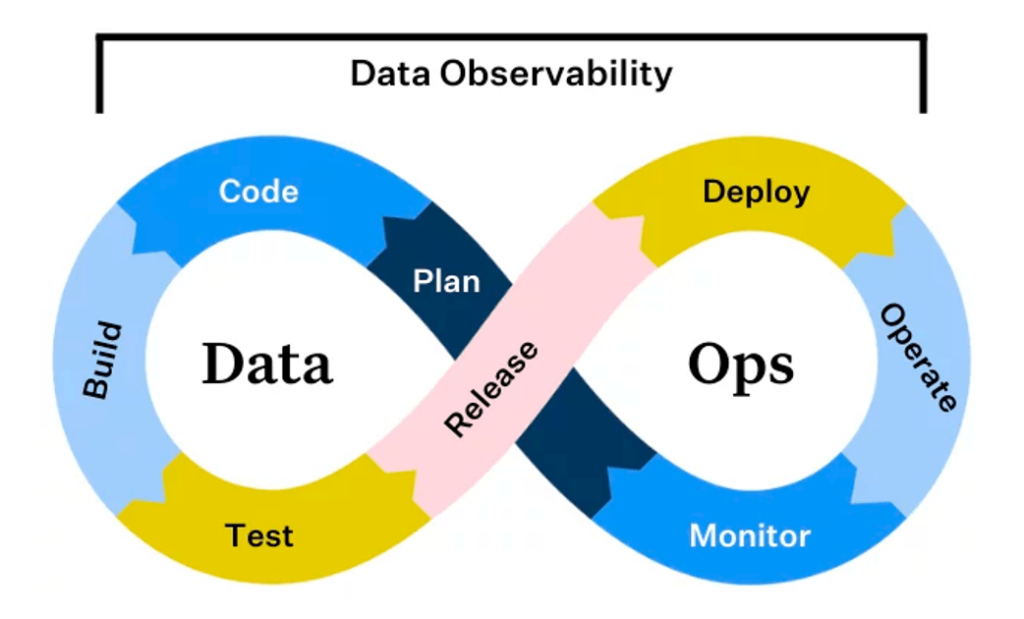Deliver Faster Data Value with DataOps
The world of data analytics is rapidly accelerating. To stay competitive and agile, organisations need to continually adapt and invest strategically in their data culture, processes, and data platforms to ensure there is strategic alignment to the needs of their business, while enabling better agility, improved time-to-insight & higher quality data delivered to end-users. By leveraging DataOps practices, organisations can deliver faster data value in a cost-effective manner, enabling businesses to adapt and uncover insights with agility.
DataOps is a lifecycle practice and collection of workflows, standards, and architecture patterns that drive agility and innovation to orchestrate data movement from data producers to data consumers, enabling the output of high-quality data with improved security.

The Key Objectives of DataOps
The primary objectives of DataOps (Data Operations) are to streamline and improve the overall management and delivery of data within an organisation. There are many benefits that can be reaped from leveraging DataOps practices which are summarised below:
- Data Agility: DataOps aims to improve the agility of data processes and operations. It involves adopting practices that enable faster and more efficient data delivery to support business requirements, decision-making, and innovation.
- Data Quality and Governance: DataOps emphasises the establishment of robust data quality practices and governance frameworks. It focuses on ensuring the accuracy, consistency, completeness, and reliability of data throughout its lifecycle.
- Improved Visibility & Data Lineage: Data lineage plays a vital role in tracking the flow of data over time, offering valuable insights into the data lifecycle based on its origin, changes, and destination within the data pipeline. This helps data engineers and analysts understand the lifecycle and transformations that data undergoes, enabling organizations to ensure data quality, integrity, and reliability are embedded throughout the entire process
- Collaboration and Communication: DataOps promotes collaboration and communication between data producers and consumers. This may involve different teams involved in data-related processes, including data engineers, data scientists, analysts, and business stakeholders. Effective collaboration ensures that data workflows are aligned with business needs and facilitates knowledge sharing in an agile fashion.
- Automation and Efficiency: DataOps seeks to automate repetitive and manual tasks involved in data processing, integration, testing, and deployment. Automation reduces errors, speeds up processes, and improves overall efficiency, allowing data teams to focus on more strategic activities.
- Scalability and Resilience: DataOps aims to build scalable and resilient data pipelines and infrastructure that can handle increasing data volumes and accommodate changing business needs. It involves designing architectures that can easily adapt and scale as data requirements evolve.
- Continuous Integration and Deployment: DataOps advocates for continuous integration and deployment practices, enabling frequent and reliable delivery of data assets. It focuses on establishing automated testing, version control, and deployment processes to ensure the smooth flow of data across systems.
- Monitoring and Performance Optimisation: DataOps involves implementing observability as a mechanism to monitor and optimise performance to track and improve the performance of data workflows across data pipelines and data platforms. This helps identify bottlenecks, optimise resource utilisation, and ensure data processes meet performance expectations.
The building blocks of DataOps practices
To reap the full benefits of DataOps practices requires strategic planning & investment into the organisation’s data culture. The following are a few building blocks and steps that can be taken to fully embrace DataOps practices:
- Promote a data-driven culture – To cultivate data literacy and build stronger relationships between data producers and data consumers and provide guidance to all stakeholders. This will help improve the data lifecycle and ensure alignment between business and technical teams to satisfy business and data requirements. Fostering a culture that encourages cross-functional collaboration between business stakeholders, business analysts, quality assurance, data engineers and analysts will enable better strategic alignment to the organisation’s business and data objectives.
- Establish Continuous Improvement & Feedback – To aggregate and assess data usage across the organisation to build greater insights and use these insights to continually improve processes and practices in an agile manner, while ensuring data quality, integrity, and reliability is at the forefront of data delivery
- Automation – To assess current data processes, pipelines, and tooling that can enable better automation of data delivery including data integration, data cleansing & standardisation, data transformation, data modeling, and data analytics to serve downstream data consumers in a timely & cost-efficient manner.
Conclusion:
DataOps aims to enhance the overall effectiveness, efficiency, and value of data operations within an organisation, ultimately driving better business outcomes and data-driven decision-making.
As the market of data analytics is rapidly accelerating, the adoption of DataOps practices is continuing to gain momentum. Organisations that wholeheartedly embrace DataOps practices and invest in driving and fostering a data-driven culture will be ideally positioned to deliver faster data value to identify opportunities and challenges and make faster decisions with confidence.
